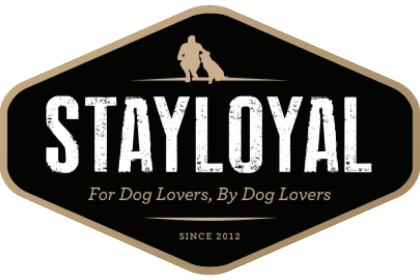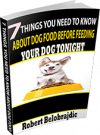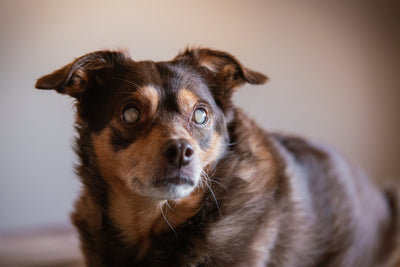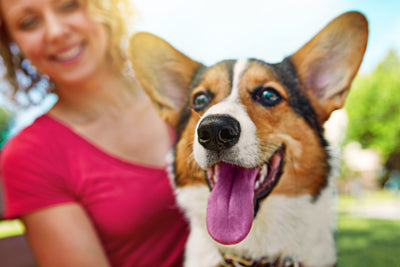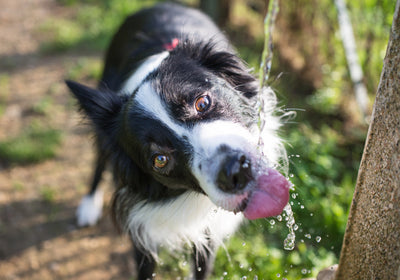The 10 Point Canine Health Check You Can Do At Home!
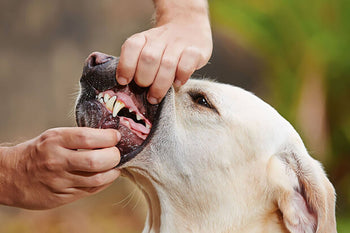
Every day I look at my dogs and do an intuitive health check on them. I always notice changes in energy levels and the way they move. Whether they are more energetic or flat and lethargic, whatever it is, I always notice. I also notice the way they move if they have a slight limp or if an older dog looks sore when they move.
I once had a 6 week old pup look very flat and his litter mates seemed normal. I rushed him to the vet in fear of Parvovirus or something bad. The vet looked over him and couldn’t find anything wrong. During the consult his energy levels increased and he started playing with the vet. I was happy it was a false alarm. I have heard of stories where owners noticed something but took too long to get to the vet and when they did eventually take their dog to the vet it was too late.
So if you notice a large drop in energy levels in your dog, take him or her to the vet immediately. It may be nothing but if it is something you want a good Vet on it as soon as possible.
Although I do a basic health check intuitively there is also a check list I go through with my dogs every month or so. The more you do this the better you will get at noticing differences with your dog. Also note that gradual changes come with age.
1. Body condition – You should just be able to feel the ribs and no more. There should be a waist between your dog’s ribs and hips and the belly should not sag. Watch for signs of weight loss or gain. So when feeding adjust as necessary.
2. Ears – Should be clear of any thick brown or green wax and have no smell. Some long-eared breeds benefit from regular ear cleaning with special ear cleaners. Be careful what you use to clean the ears, the skin in this area can be very sensitive. And don’t clean too deeply or vigorously, as the eardrum can be easily perforated.
3. Eyes – Should be bright and clear, with no signs of runniness, redness or soreness. Your dog should not shy away from light as if it hurts their eyes. Eye problems can sometimes be accompanied by flu symptoms.
4. Nose – There should be no crusting on the surface, runny discharges or bleeding. Noses can change from black to pink and back again, something that can vary through the year. The nose being cold or wet has no correlation to illness.
5. Breath – Bad breath is not just a cosmetic or social problem (we all know dogs with bad breath can be less-than-pleasant company). Bad breath can indicate a digestive problem or bad teeth, which could potentially lead to organ problems if left untreated.
6. Oral hygiene – Teeth should be white with no excess tartar, which looks thick and brown. The gums should be pink or black, not red or swollen. Feeding large meaty bones are best for cleaning teeth.
7. Skin and coat – Your dog’s skin can be pink or black, depending on the pigments normally found in the breed. The coat should be healthy and shiny with no broken hairs. And both should be free of any scruffy dandruff or sores. Hair can be shed all year round, but it’s normally worse in summer and autumn.
8. Nails – Should be smooth and can be white or black. Nails that are roughened and break easily may require attention. When checking the nails, remember the dewclaws found on the inside of the leg just below the wrist. Some dogs have them on the front legs only; some have them front and back; and some don’t have any at all. These dew claws may need cutting occasionally.
9. Digestion – Keep an eye on your dog’s appetite for any noticeable changes. This can be very difficult to tell if the dog is new to you or a very fussy eater. There should be no sickness or choking when eating. Stools should be a normal colour with no diarrhoea, constipation or mucus (clear jelly) passed.
10. Thirst – If your dog suddenly becomes thirsty or starts drinking more than usual, consult your vet.
It is important to be aware of your dog’s health and happiness, so keep an eye on them and, if in doubt,consult a vet!
